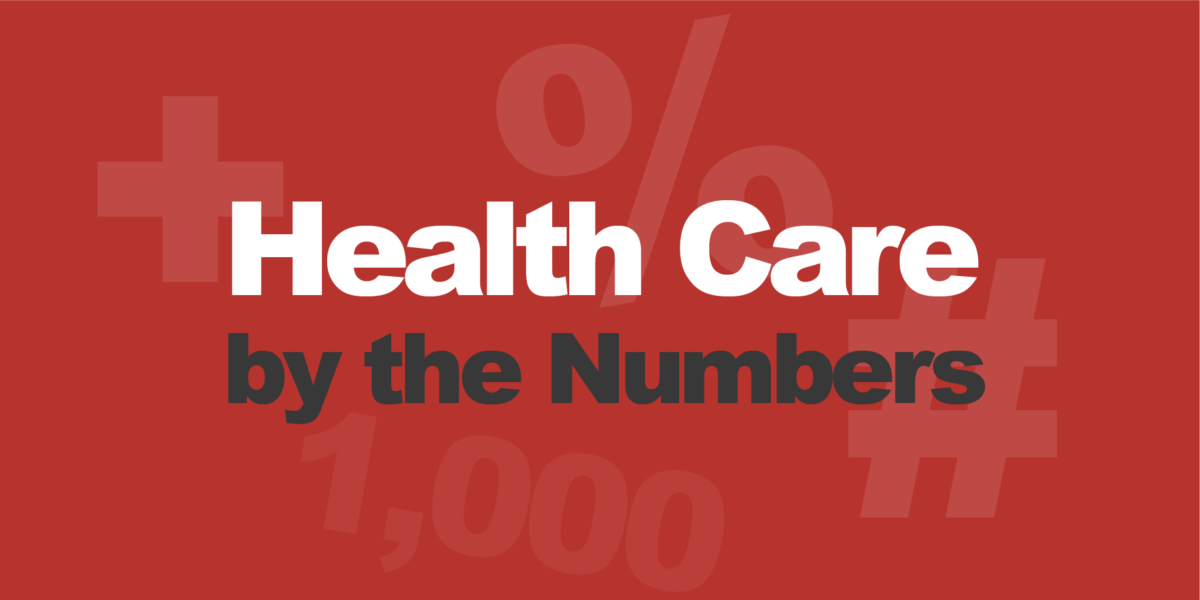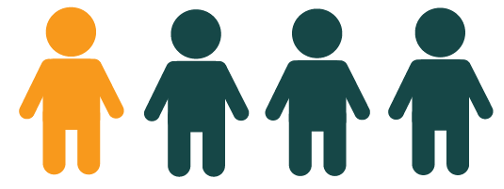Losing Insurance Coverage

Losing Coverage During the Pandemic
Number of people who lost insurance because of a job loss from March 1 to May 2, 2020. 31 million workers filed for unemployment, and 78 million people live in families in which someone lost a job 1
Number of people in these working families who lost a job but never had insurance in the first place 2
Total number of people who were already uninsured before the pandemic 3
Number of states in which more than one million people lost employer-sponsored insurance coverage, March 1 to May 2, 2020) 4

Number of people who lost insurance, but are ineligible for Medicaid and insurance subsidies because state officials refused to expand Medicaid 5
Number of people who lost insurance, but are ineligible for Medicaid and insurance subsidies because federal laws excludes them on the basis of income, citizenship, or employment status 6
Number of people who lost insurance coverage and are eligible for new coverage, but will have to overcome administrative and financial barriers in order to enroll in Medicaid or private insurance 7
Official unemployment rate in May 8
Unemployment rate in May including people who want a job but have given up looking, people working part time who want more hours, and people who are temporarily laid off 9
Earliest possible year by which the Federal Reserve expects unemployment to return to pre-pandemic levels 10
1 Garfield, Rachel “Eligibility for ACA Health Coverage Following Job Loss” Kaiser Family Foundation (May 13th, 2020). https://www.kff.org/coronavirus-covid-19/issue-brief/eligibility-for-aca-health-coverage-following-job-loss/. For comparative estimates of workers losing coverage (not counting dependents), see Economic Policy Institute:
https://www.epi.org/blog/16-2-million-workers-have-likely-lost-employer-provided-health-insurance-since-the-coronavirus-shock-began/
3 Tolbert, Jennifer et al. (Dec. 13, 2019), “Key Facts about the Uninsured Population,” Kaiser Family Foundation,
https://www.kff.org/uninsured/issue-brief/key-facts-about-the-uninsured-population/
8 Parlapiano, Alicia (June 5, 2020). “The Economic Pain That the Unemployment Rate Leaves Out.” New York Times.
https://www.nytimes.com/interactive/2020/06/05/upshot/what-the-pandemic-unemployment-rate-leaves-out.html
10 The Federal Reserve (June 10, 2020), “Federal Reserve Board and Federal Open Market Committee release economic projections from the June 9-10 FOMC meeting,”
https://www.federalreserve.gov/newsevents/pressreleases/monetary20200610b.htm
Everyday Coverage Losses
Portion of adults (18 to 64) who find themselves uninsured at some point each year (24.4%) 11

Percentage of people on an employer plan in Michigan who were not on that same plan a year later 12
Percentage of people with poverty-level incomes who find themselves uninsured at some point each year 13
Portion of low-income people experiencing a change in insurance coverage who report having to skip doses of medication (34%) or a decline in health (36%) 14

Portion of low-income people experiencing a gap in coverage who could not get needed medical care in the past year because of the cost 15
Portion of adults with employer-sponsored insurance who experience a change in primary health insurance every two years (34.6%) 16

Percentage of private-sector employers with fifty or fewer workers who offered insurance in 2014 but not in 2015 17
Average number of years a person in poverty in 2007 would continue to live in poverty over the following 12 years. (As people’s income and employment shift, so too does their eligibility for Medicaid and insurance eligibility.) 18
11 Okoro, Catherine A. et al (February 24th, 2017), “Surveillance for Health Care Access and Health Services Use, Adults aged 18-64 years – Behavioral Risk Factor Surveillance System,” Center for Disease Control and Prevention,
https://www.cdc.gov/mmwr/volumes/66/ss/ss6607a1.htm.
12 Austic, Elizabeth "INSURANCE CHURNING" University of Michigan Poverty Solutions (November 2016).
https://poverty.umich.edu/research-publications/policy-briefs/insurance-churning/
14 Sommers, Benjamin "Insurance Churning Rates For Low-Income Adults Under Health Reform: Lower Than Expected But Still Harmful For Many" Health Affairs (October 2016).
https://www.healthaffairs.org/doi/10.1377/hlthaff.2016.0455
16 Graves, John. “The Evolving Dynamics of Employer‐Sponsored Health Insurance: Implications for Workers, Employers, and the Affordable Care Act”. The Milbank Quarterly (December 19th, 2016).
https://onlinelibrary.wiley.com/doi/abs/10.1111/1468-0009.12229
17 Vistnes, Jessica "Substantial Churn In Health Insurance Offerings By Small Employers, 2014–15" Health Affairs (September 2017).
https://www.healthaffairs.org/doi/abs/10.1377/hlthaff.2017.0431
18 Larrimore, Jeff. "Presence and Persistence of Poverty in U.S. Tax Data" National Bureau of Economic Research (April 2020).
https://www.nber.org/papers/w26966
Uninsured Kids and Moms
Number of kids without any health insurance coverage, 2018 19
Number of kids eligible for Medicaid/CHIP (Children’s Health Insurance Program), but still uninsured, 2016 20
National decline in CHIP Enrollment from December 2017 to July 2019 due to changes in employment, enrollment barriers, and anti-immigrant threats 21
 Source: Kaiser Family Foundation
Source: Kaiser Family Foundation
Fraction of states that witnessed a reduction in CHIP enrollment in 2018 22
Uninsured children who were enrolled in Medicaid/CHIP the prior year 23
Number of mothers with kids under 18 who don’t have health insurance 24
Percentage of women getting Medicaid coverage for delivery who experience a coverage gap in the ensuing six months 25
 Source: Daw et al., Health Affairs
Source: Daw et al., Health Affairs
Percentage of new mothers in Texas who are uninsured 26
Percentage of new mothers who are uninsured nationwide 27
19 Berchick, Edward. "Children’s Public Health Insurance Coverage Lower Than in 2017" United States Census Bureau (September 10, 2019).
https://www.census.gov/l ibrary/stories/2019/09/uninsured-rate-for-children-in-2018.html
20 Haley, Jennifer "Uninsurance and Medicaid/CHIP Participation among Children and Parents". Urban Institute (September 2018).
https://www.urban.org/sites/default/files/publication/99058/uninsurance_and_medicaidchip_participation_among_children_and_parents_updated_1.pdf
21 See "Analysis of Recent Declines in Medicaid and CHIP Enrollment" Kaiser Family Foundation (Nov. 25, 2019). https://www.kff.org/medicaid/fact-sheet/analysis-of-recent-declines-in-medicaid-and-chip-enrollment/. See also Goodnough, Abby & Margot Sanger-Katz (Oct. 22, 2019), “Medicaid Covers a Million Fewer Children. Baby Elijah Was One of Them.” New York Times,
https://www.nytimes.com/2019/10/22/upshot/medicaid-uninsured-children.html
23 Sommers, Benjamin "Why Millions Of Children Eligible For Medicaid And SCHIP Are Uninsured: Poor Retention Versus Poor Take-Up" Health Affairs (July 26th, 2007).
https://www.healthaffairs.org/doi/full/10.1377/hlthaff.26.5.w560
24 The Urban Institute finds that 16.5% of single mothers and 10.6% of married mothers are uninsured. The Census Bureau reports that there are 2,715,000 single mothers and roughly 31,293,000 married mothers. See McMorrow, Stacey et al (December 2018)., “Health Insurance Coverage for Women of Reproductive Age, 2013–16,” Urban Institute, https://www.urban.org/research/publication/health-insurance-coverage-women-reproductive-age-2013-2016.; U.S. Census Bureau (2019), “Table F1. Family Households, by Type, Age of Own Children, Age of Family Members, and Age of Householder: 2019,” America’s Families and Living Arrangements: 2019,
https://www.census.gov/data/tables/2019/demo/families/cps-2019.html.
25 Daw, Jaime (April 2017), "Women In The United States Experience High Rates Of Coverage ‘Churn’ In Months Before And After Childbirth," Health Affairs,
https://www.healthaffairs.org/doi/full/10.1377/hlthaff.2016.1241
26 McMorrow, Stacey & Genevieve Kenney (Sept. 19, 2018), “Despite Progress Under The ACA, Many New Mothers Lack Insurance Coverage,” Health Affairs Blog,
https://www.healthaffairs.org/do/10.1377/hblog20180917.317923/full/.
27 McMorrow, Stacey et al. (May 2020), “Uninsured New Mothers’ Health and Health Care Challenges Highlight the Benefits of Increasing Postpartum Medicaid Coverage,” Urban Institute,
https://www.urban.org/research/publication/uninsured-new-mothers-health-and-health-care-challenges-highlight-benefits-increasing-postpartum-medicaid-coverage.
